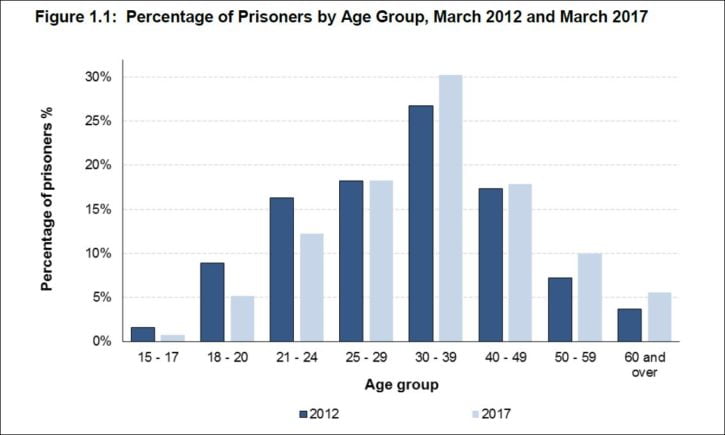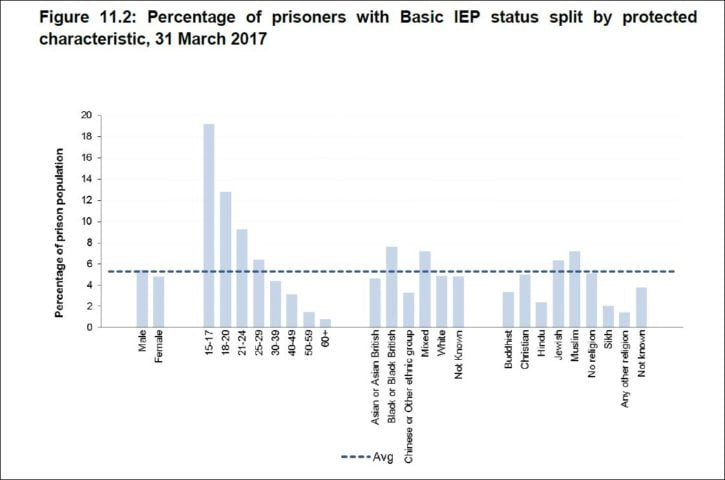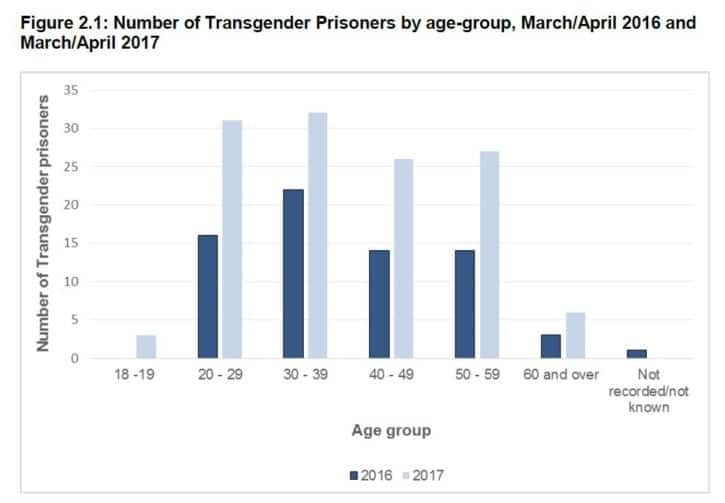Protected characteristics
Along with its annual Statistics on Race and the Criminal Justice System, the Ministry of Justice also published its Annual Offender Equalities Report last week (30 November 2017).
This report focuses on all the data that the National Offender Management Service (now superseded by Her Majesty’s Prison and Probation Service) on the nine Protected Characteristics listed in the 2010 Equality Act:
- Age
- Gender
- Ethnicity
- Disability
- Sexual orientation
- Religion or Belief
- Gender reassignment
- Marriage/Civil Partnership
- Pregnancy/Maternity
Here are ten facts that I found of interest; I hope you do too.
1: ROTL
Female prisoners were twice as likely as males to have at least one instance of ROTL in 2016 (16% of females compared with 8% of males). Female prisoners released on temporary licence had on average 48.6 instances of ROTL, compared with 47.2 instances of Release on Temporary Licence on average for male prisoners.
2: Adjudications
The rate of proven adjudications per 100 prisoners was higher for women (152) than for men (130) in 2016. Rates for both men and women have seen an increase since 2011, but the rise has been more marked for women, increasing by 38%.
3: Reoffending
The average number of reoffences per reoffender was higher for females than for males (3.93 as compared with 3.81).
4: An ageing prison population
There has been a change in the age profile of prisoners. Between 2012 and 2017, there was a decrease in the number of young prisoners (those aged 15 to 241) of 34% and an increase in the number of older prisoners (those aged 50 and over) of 40%.

5: Self-harm
The age group with the highest rate of self-harm incidents per 1,000 prisoners in 2016 was those aged 18-20 with 962 incidents per 1,000 prisoners. Overall, across the time-series, the rate of self-harm incidents per 1,000 prisoners decreases as age increases.
6: Prison ethnicity
Prisoners who declared their ethnicity as Black, Asian or Minority Ethnic (BAME) represented 22,432 (or 26%) of all prisoners. At 31 March 2017, the largest BAME grouping of prisoners was Black or Black British with 10,668 (13%) prisoners. Asian or Asian British made up 8% (6,945) of the prison population. The smallest grouping was Chinese or other ethnic group with 1,095 prisoners (1%).
7: Incentives and earned privileges
Black and Mixed ethnicity prisoners have the highest proportion of prisoners on basic IEP status, 7% and 8% respectively, at 31 March 2017. This was higher than White prisoners (5%) at the same point in time.

8: Sexual orientation
Of those who declared their sexual orientation, 97% of prisoners identified themselves as Heterosexual with 71,901 prisoners, while 2.6% (1,954) identified as Gay/ Lesbian/ Bisexual or Other (LGB).
9: Religion
The proportion of prisoners identifying as Muslim grew steadily between 2002 and 2017. In 2002, Muslims made up 7.7% of the prison population, as at March 2017 this figure was 15.3%. Muslim prisoners have the highest proportion of prisoners on basic IEP status, 8%, at 31 March 2017. This was higher than Christian prisoners at 5%, at the same point in time.
10: Gender Reassignment
There were 125 prisoners currently living in, or presenting in, a gender different to their sex assigned at birth and who have had a local transgender case board.

All prison posts are kindly sponsored by Prison Consultants Limited who offer a complete service from arrest to release for anyone facing prison and their family. Prison Consultants have no editorial influence on the contents of this site.








